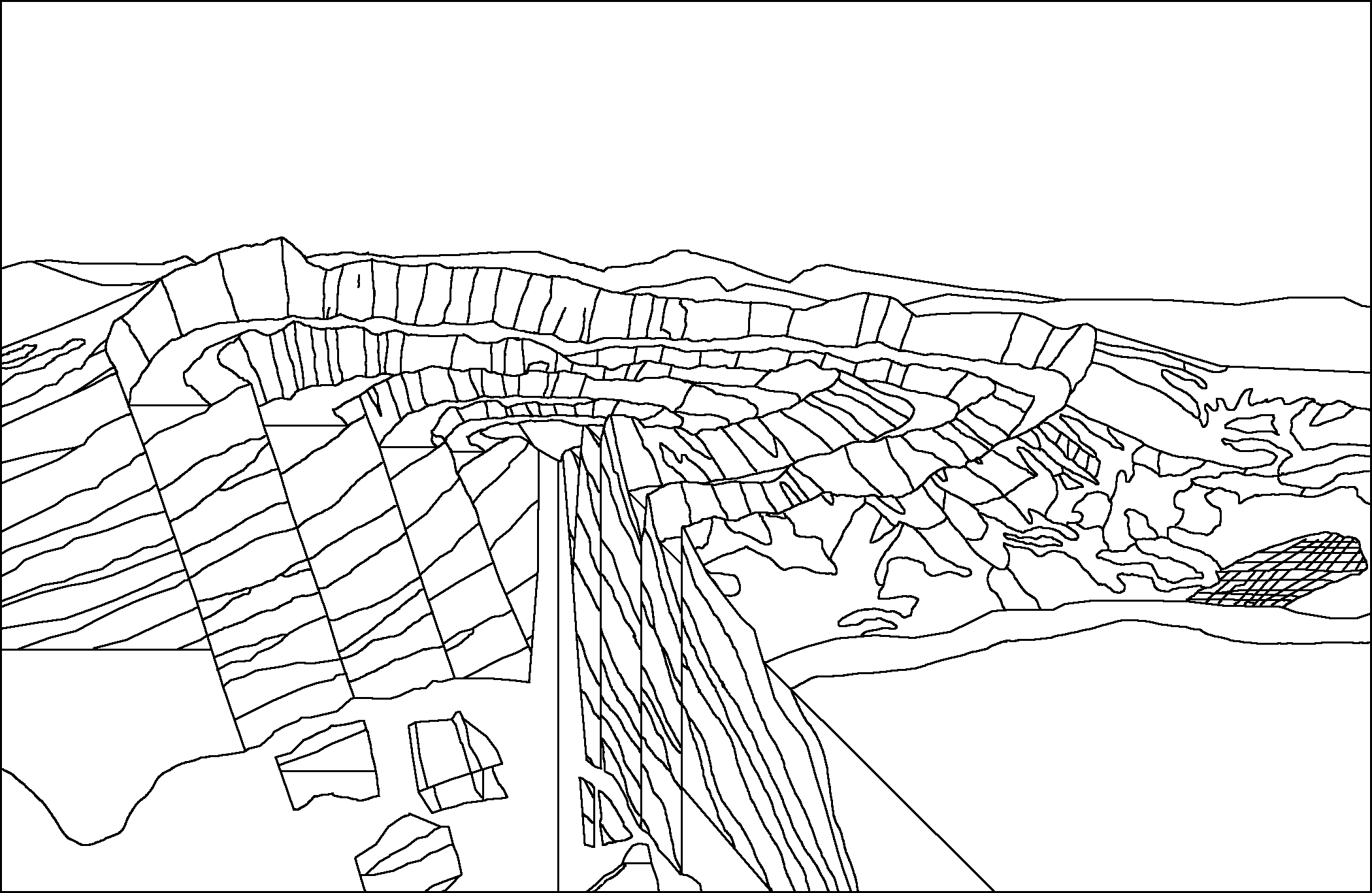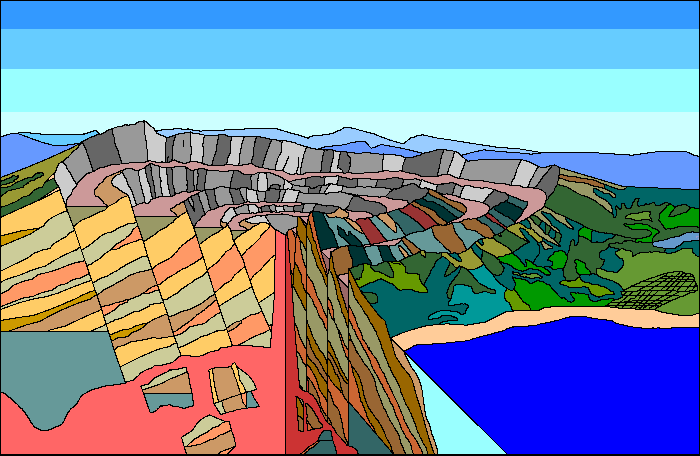Mount Vesuvius and Pompeii: After the Eruption
Steven Dutch, Professor Emeritus, Natural and Applied Sciences, University of Wisconsin - Green Bay
Location: 40o 49' 16" N, 014o 25' 33" W.
Between the weakening of gas pressure, plus the large amount of material blown out by the eruption, the magma chamber was no longer capable of supporting the weight of Mount Vesuvius and it began to collapse. The summit of the volcano sank into the magma chamber, creating a circular depression called a caldera. After the eruption, there may have been a large circular depression on the site of Vesuvius. People often assume that volcanoes "blow their tops off" but in reality, they usually collapse inward. The floor of the caldera would probably have been deeply buried by pyroclastic flow deposits from the eruption. Rain would have mixed with loose ash to cover the area around the volcano with mudflows. Ash deposits and mudflows built the shoreline outward so neither Pompeii nor Herculaneum were on the shore any more.
In the diagram, blocks of rock are shown sinking into the magma. Solid rock is denser than magma and it is quite possible that some blocks sank into the magma during the collapse. In intrusive rocks we frequently find blocks of other rock trapped in the solidified magma. Such blocks are called xenoliths and they can range anywhere from a few centimeters to kilometers in size.
Immediately after the eruption, everything would have been gray from ash. The colored illustration shows the scene as it might have looked a few years later after vegetation had begun to grow back. The site of Pompeii is shown but the city was mostly buried during the eruption.

Possible Coloring

- Mount Vesuvius and Pompeii: Before the Eruption
- Mount Vesuvius and Pompeii: The Eruption Begins
- Mount Vesuvius and Pompeii: Pyroclastic Flows
- Mount Vesuvius and Pompeii: Caldera Collapse
- Mount Vesuvius and Pompeii: After the Eruption
- Mount Vesuvius and Pompeii: Vesuvius Rebuilds
Return to Geology Coloring Book Index
Return to Professor Dutch's Home Page
Created 10 July 2009, Last Update 15 January 2020